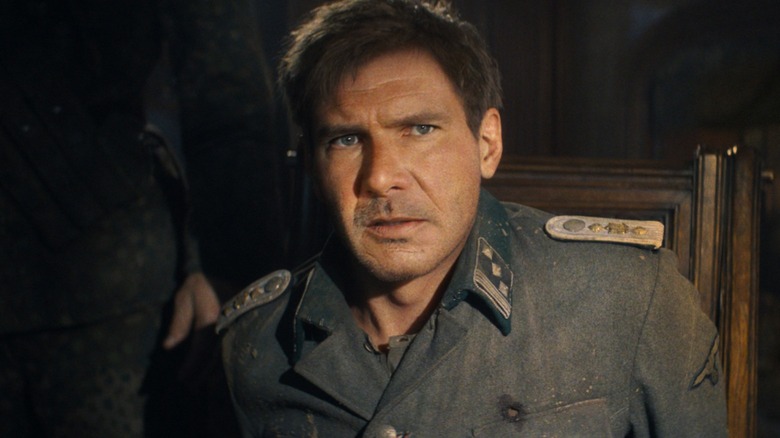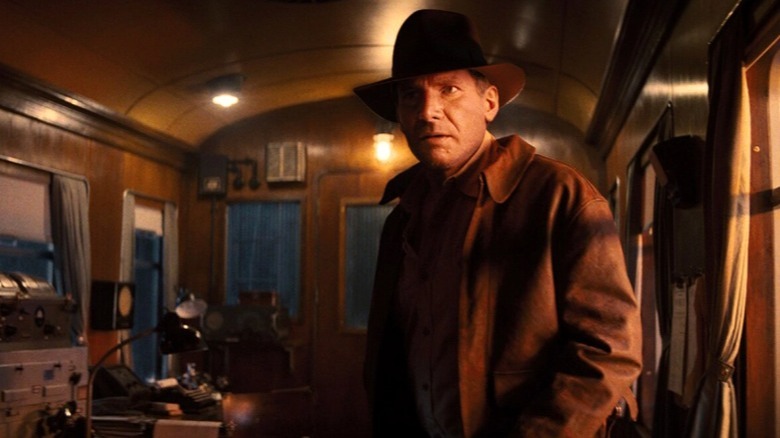Indiana Jones 5's James Mangold Wanted To Use De-Aging To Jolt The Audience
"Indiana Jones and the Dial of Destiny" is here at long last, and it's a bit different from the franchise's usual efforts. With director James Mangold at the helm, the film follows an older, more emotionally worn Dr. Henry Jones Jr. (Harrison Ford) who's coming to terms with both his own mortality as well as his obsolescence. Before diving into all of that, though, the film takes moviegoers back to Indy's Nazi-punching heyday at the tail end of World War II. This sequence digitally de-ages Ford largely to great effect, and Mangold didn't want to squander it in any way.
Mangold explained to Inverse, "The goal of the opening sequence of the movie was to give the audience a blast of the classic golden-age Indy I missed, and they miss." For him, it was also an attempt to emulate the style of the four previous "Indiana Jones" movies, nailing down director Steven Spielberg's style as closely as possible. Additionally, Mangold wanted to use de-aging technology and the flashback sequence as a whole to jolt the audience once the film jumps forward to 1969. "To land in the sobering reality of where we are in 1969 with our hero, who is now in his '70s, part of that is to jolt the audience and to kind of go, 'Oh, whoa. Okay,'" he said.
Of course, that's just Mangold's take on the film's de-aged Indy. What does Ford, the man behind that CGI mask, think of it?
Ford fully supported The Dial of Destiny's de-aging
De-aging and recreating aged or deceased actors using CGI is a hot topic in Hollywood currently, and it's not hard to figure out why. Not only is the tech a bit dodgy, resulting in some audiences taking unwanted trips to the uncanny valley, but there are moral implications worth highlighting too. Most crucially, in the case of dead actors, is it morally or ethically acceptable to completely recreate them using visual effects or plaster a digital representation of their face on a living actor? This question and others like it will surely remain at the forefront of the entertainment world for years to come, especially as this tech continues to advance.
As for Harrison Ford, though, by the sound of it, he wasn't offended or disgruntled by the use of de-aging tech on "Indiana Jones and the Dial of Destiny." At the sequel's 2023 Cannes Film Festival premiere, he explained that this VFX technique should be used tastefully and serve the story at hand — otherwise, it's not worth it. "it sticks out like a sore thumb if it's not honest, it's not real...I mean, emotionally real. And so I think it was used very skillfully," he said, very much giving it his stamp of approval (via Entertainment Weekly).
Whether folks like it or not, de-aging is likely here to stay. One can only hope that it's used as respectfully as it is in "Indiana Jones and the Dial of Destiny" in the future.

